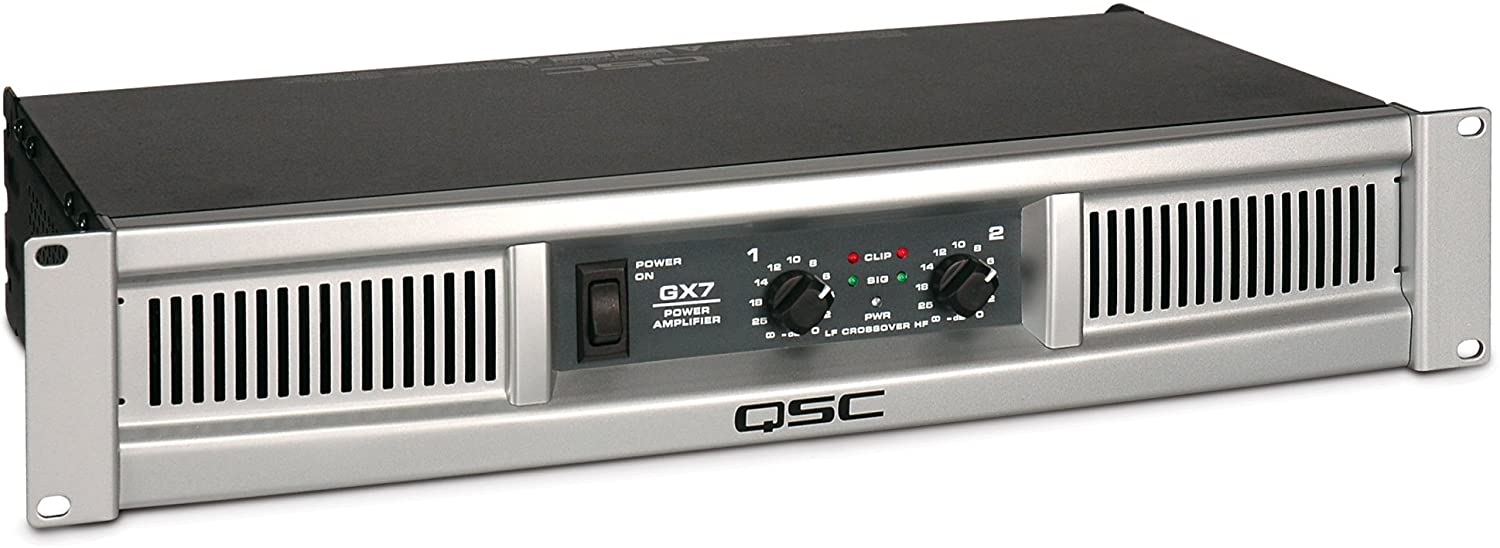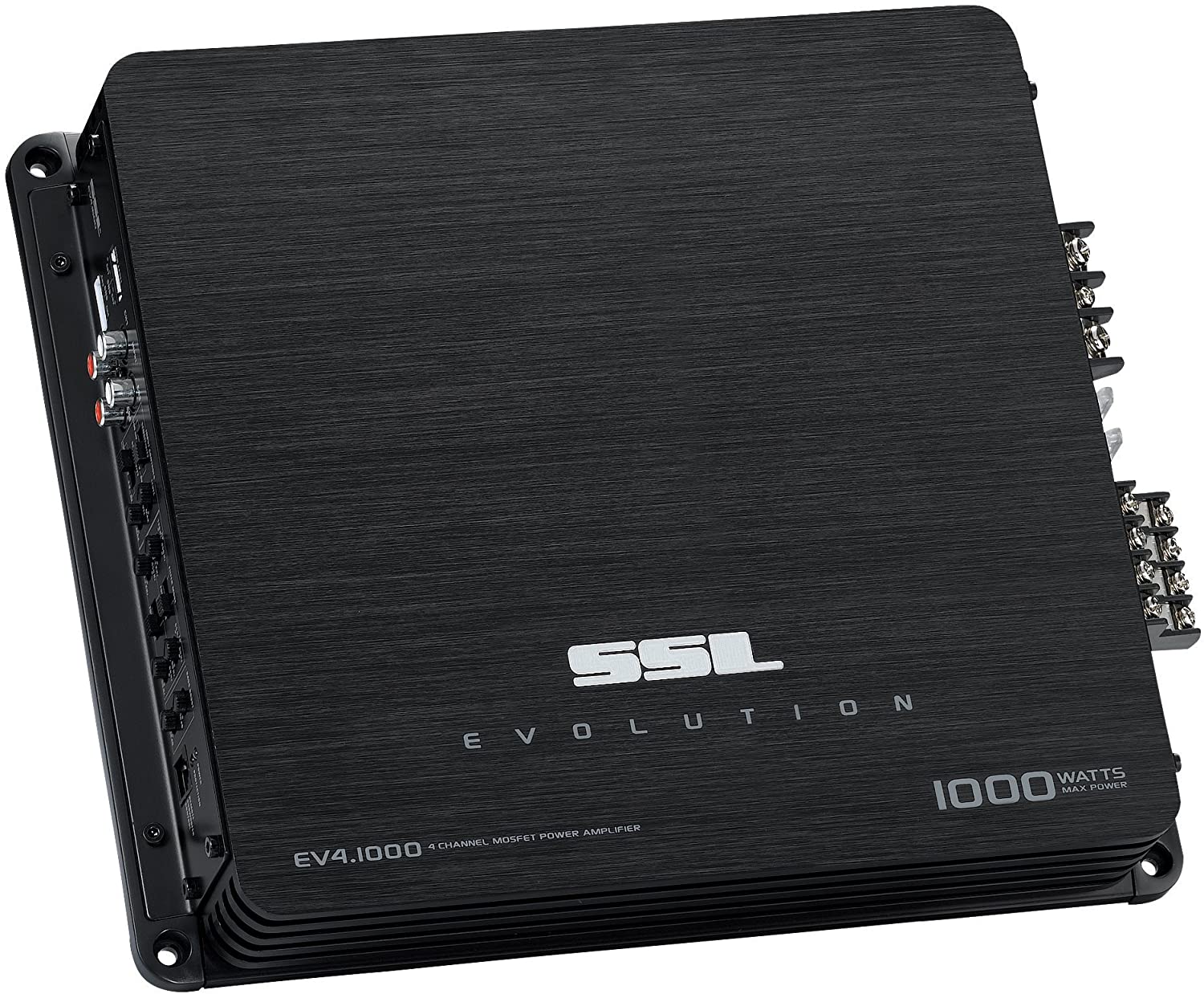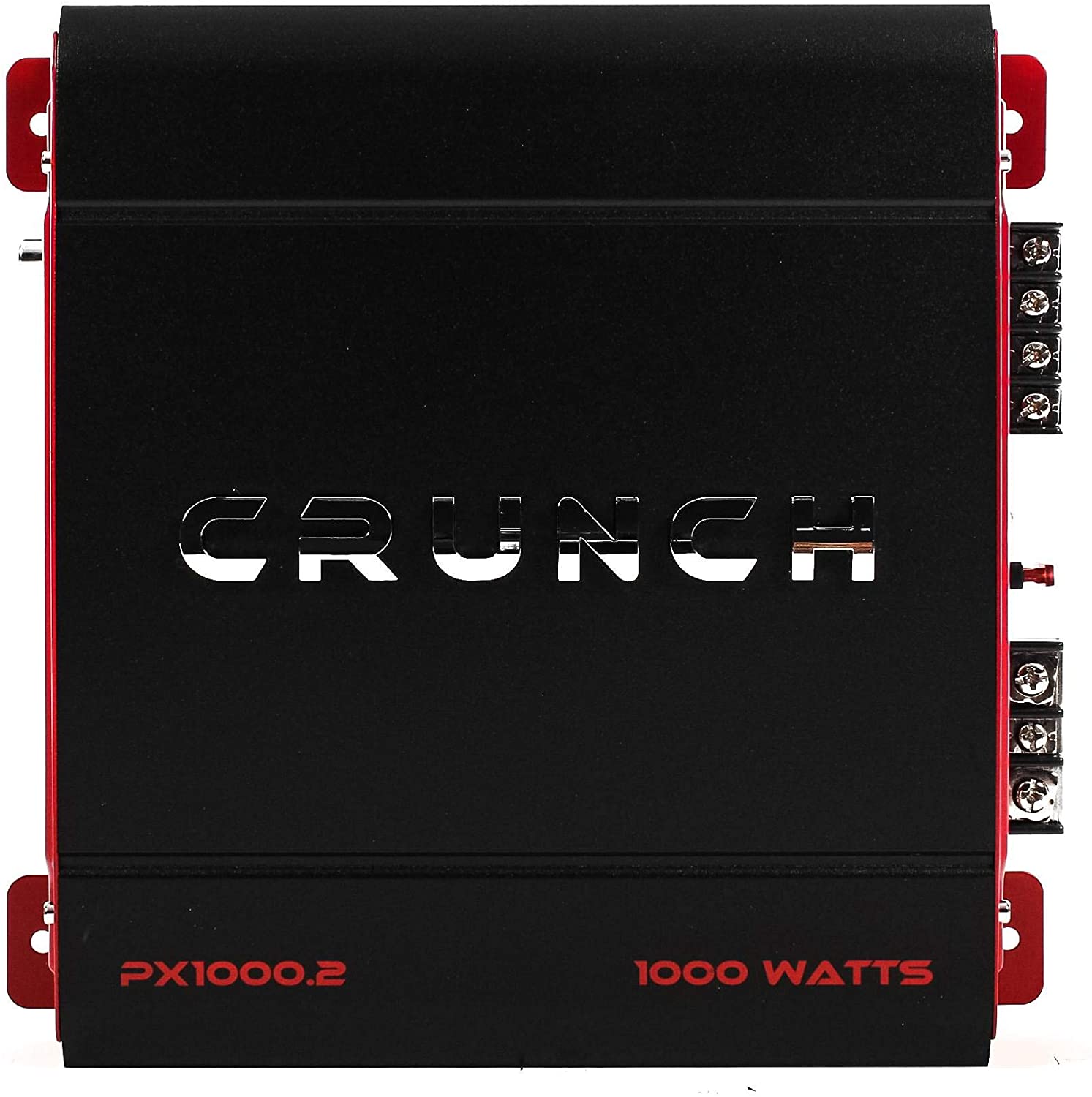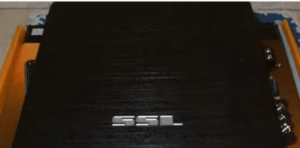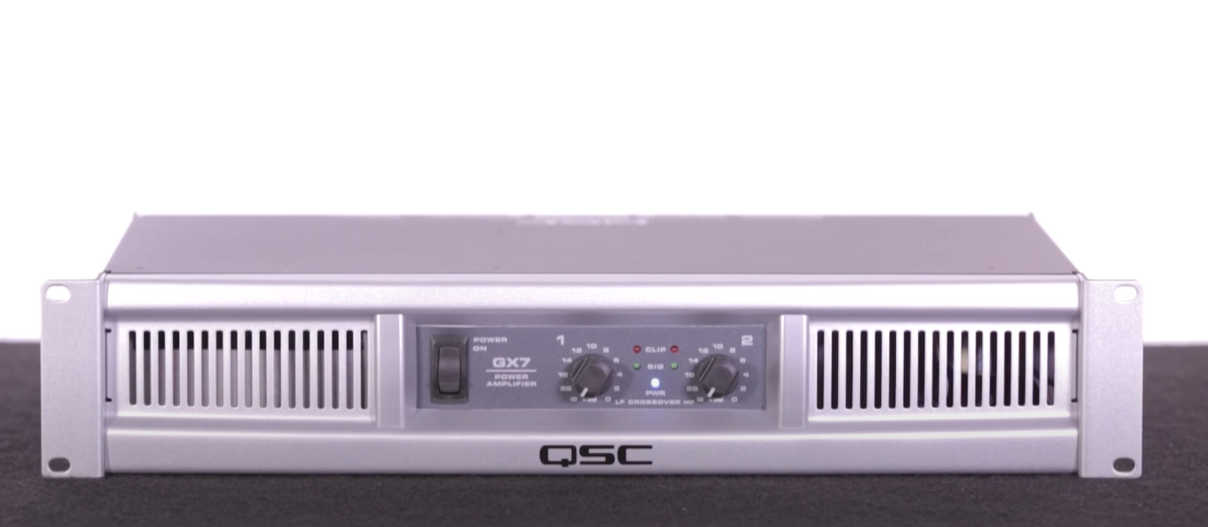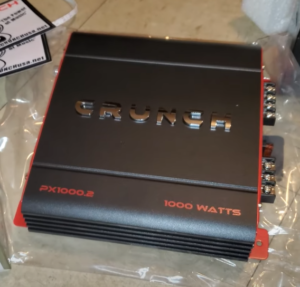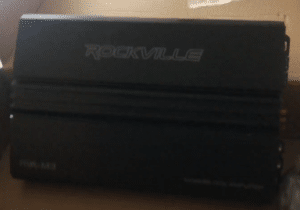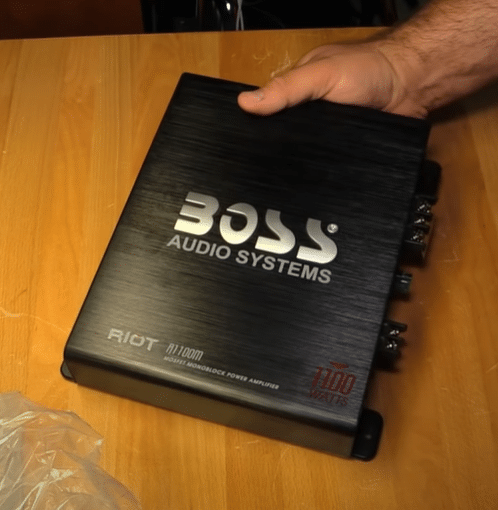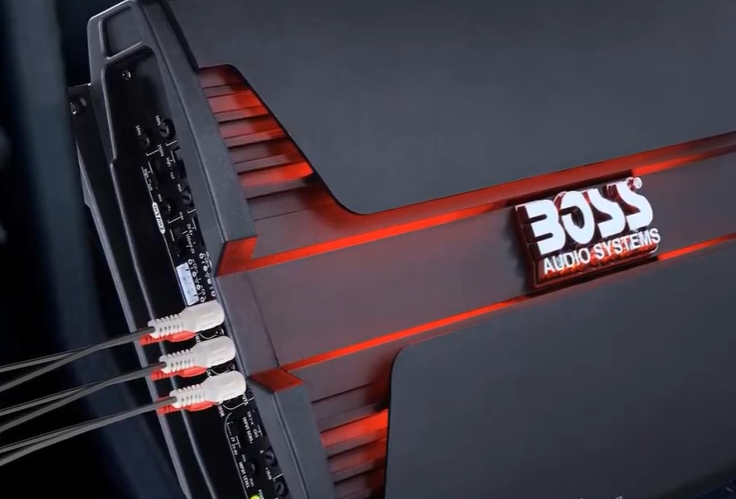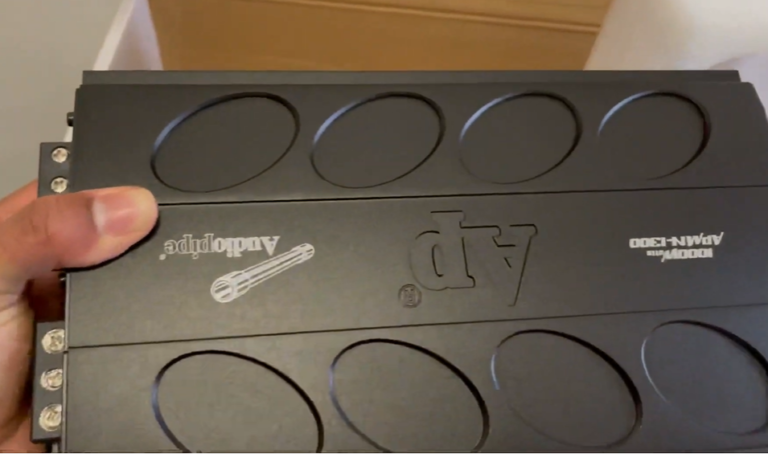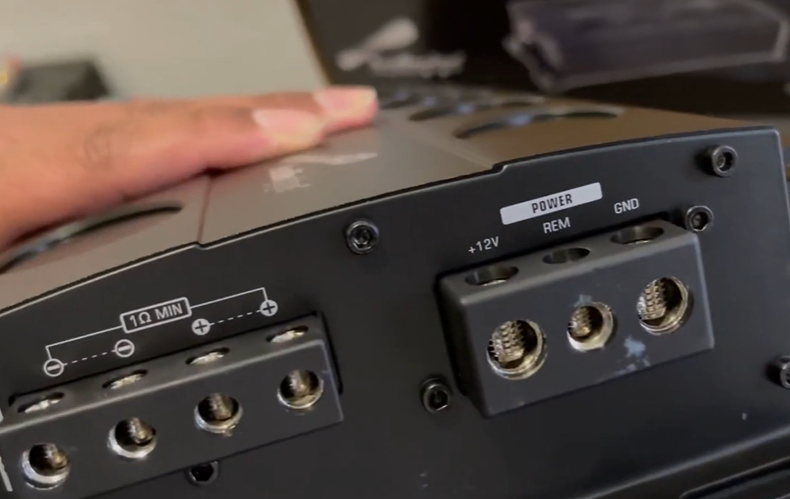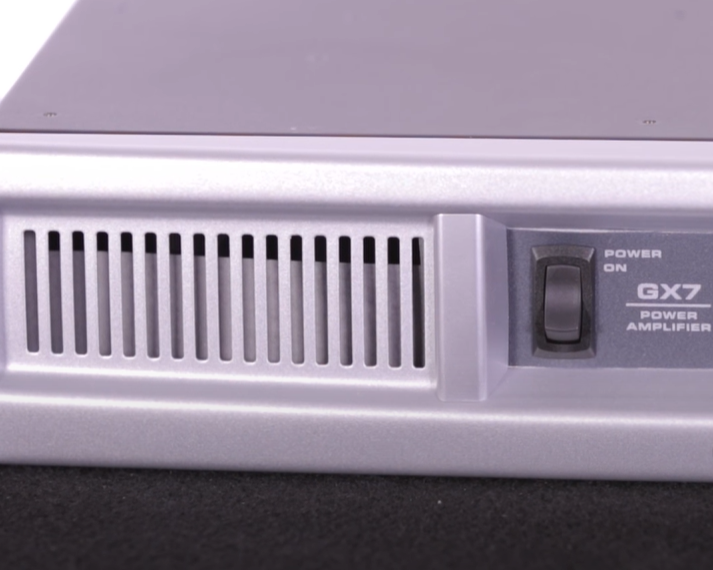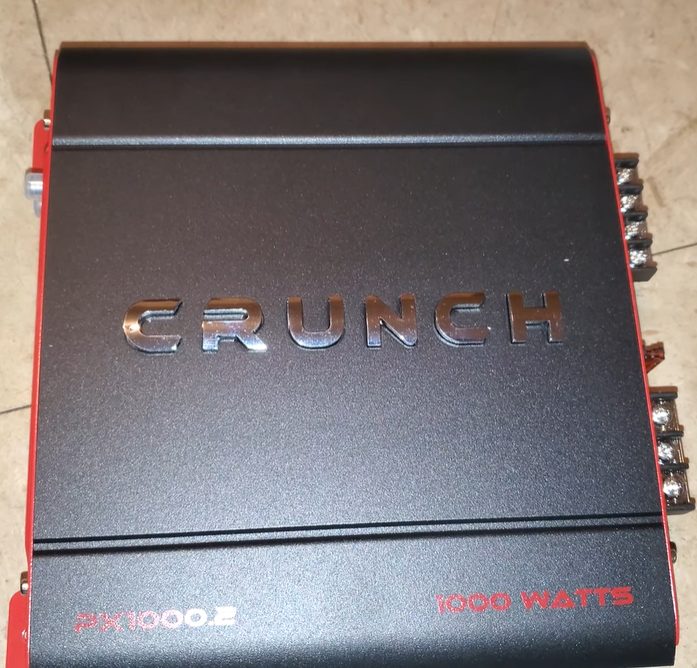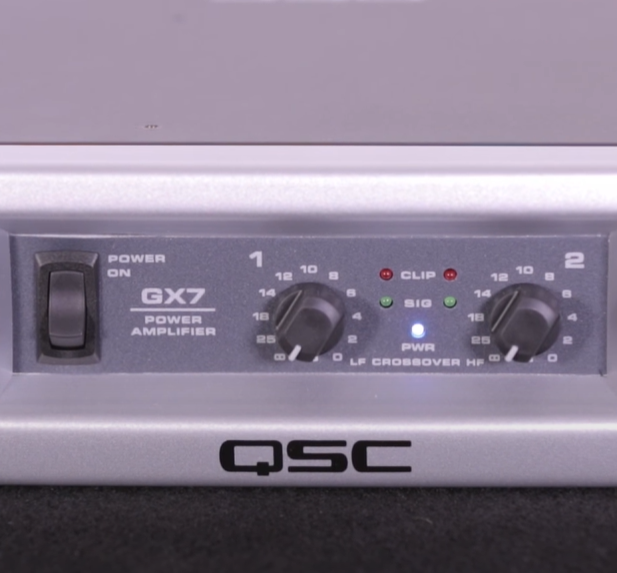-
Willie Greer
1000 watts at RMS or 1000 watts peak? This makes a difference to the sound quality of your amp. If you don’t know the difference and fear you may make the wrong decision with your hard-earned money, then rest assured because our team of audio experts is here to help you. Let’s dive into some of our recommendations for best 1000-watt amplifiers.
Box GX7
- Has RCA phono connectors
- Optimized for headroom
- GuardRail protection
- Subwoofer & satellite crossover
Labs EV4.1000
- Complete range amplifier
- Class A/B amp
- MOSFET power supply
- Variable crossover
PX-1000.2
- Bridgeable amp
- Minimizes distortion
- Class AB amp
- QTD Technology
Reviews of the Top 1000-Watt Amps
Sound Storm Labs EV4.1000
The Sound Storm Labs EV4.1000 is a one-of-a-kind amplifier if you are looking for a full-range option with class AB topology and MOSFET power supply. The complete range capabilities will deliver excellent sound, the AB topology will make sure the audio is precise and the MOSFET power supply is extra efficient.
For connection, there are high and low level inputs plus the convenience of a variable high and variable low pass filter.
For user control, the Sound Storm Labs EV4.1000 has a variable bass boost and input gain control, an input sensitivity selector as well as remote subwoofer control.
What We Like
- Full-range amplifier
- Class AB amplifier
- Bridgeable
- High and low pass filter
- High and low level inputs
- Bass boost
- Input gain control
- Remote subwoofer control
- 6-year platinum warranty
- 2-ohm stable
- MOSFET power supply
- Short protection
What We Don't Like
- May go into protection mode often
- Can be a little heavy
QSC A-B Box GX7
The QSC GX7 amp is a little expensive, but our experts say it is with good reason. The GX7 delivers professional-level performance, is lightweight, and built to last. The 1000-watt amp can handle PA speakers, subwoofers, and your average speakers.
The amp is more powerful and even lighter in weight because it features QSC’s PowerLight supply. The amplifier boasts one of the highest power output to weight ratios in the amp industry. It also comes with an in-built variable speed fan that will keep the unit cool.
The power amplifier also has GuardRail protection, which can pump out the power at peak but protect your car audio system from overloads.
What We Like
- GuardRail protection
- Subwoofer and satellite crossover
- Very lightweight but powerful
- Optimized for real-world headroom
- Binding posts
- LED indicator lights on the front panel
- PowerLight supply
- Very high power-to-weight ratio
- Variable speed fan
- Front panel controls
What We Don't Like
- High price
- The fan can make some noise
Crunch PX-1000.2
There is always a premium option just like there is always a budget option for those who want car amplifiers that won’t break the bank. The Crunch PX-1000.2 is our team’s selection for the best 1000-watt amp for a low price.
The amp features exclusive technologies that will help boost the audio yet minimize distortion. What sets the PX1000.2 apart from another 1000-watt car amplifier is Crunch’s Quick Thermal Dispersion Technology, or QTD. The brand utilizes more aluminum in the heat sink, which allows more efficient cooling in this inexpensive car amplifier.
The Crunch PX-1000.2 also comes with a complete wiring kit for easy installation.
What We Like
- High-quality circuitry
- Built to be reliable
- Minimizes distortions
- Best choice at a budget
- QTD Technology
- 2-channel amplifier
- 500 watts at 2 ohms
- 250 watts at 4 ohms
- Can be mono bridged
- Class AB stereo amplifier
- Comes with wiring kit
- Great entry-level 1000-watt amp
What We Don't Like
- Not the best for professional audiophiles
- Not super loud
Rockville RVA-M3
The Rockville RVA-M3 is a compact monoblock amplifier that can deliver 1000 watts of RMS power output. While others may boast 1000 watts at peak, the small car amplifier is CEA compliant for 1000 RMS at 1 ohm. As for its peak rating, the RVA-M3 can reach heights of 4000 watts!
You won’t detect the harmonic distortion, which is less than 1%, and the high speed MOSFET power supply with the class D amp topology, you have one very efficient amplifier on your hands.
Other coveted capabilities the amp features include protection circuitry, an LED indicator, adjustable equalizer, radiation cooling, and an extruded aluminum heatsink.
What We Like
- Fully adjustable filter
- IC-controlled protection circuitry
- Less than 1% total harmonic distortion (THD)
- Radiation cooling
- Subsonic filter
- Max power output of 4000 watts
- 1000 RMS watts
- Status mode LED indicator
- Extruded aluminum heat sink
- Class D technology
- Dyno certified and CEA compliant
What We Don't Like
- Needs the remote for low-frequency adjustments
- Not the best to install under or behind seats
BOSS Audio Systems R2504
Boss Audio systems often create excellent units whether it’s subs or amps. The R2504 is an excellent 1000-watt amplifier that can give you 500 watts RMS x 2-channel at 4 ohms at bridged.
You can’t have a good system without a MOSFET power supply, and the Boss Audio Systems R2504 gives you that and much more for efficiency. The class AB amp has high and low level inputs and a high and low pass crossover.
We can’t forget about the variable bass boost with remote subwoofer level control included. To top off the sleek and compact amp, Boss has its logo in blue that illuminates when the amp is in action.
What We Like
- 1000 watts max power
- Class AB
- High and low level inputs
- High and low pass crossover
- Variable bass boost
- MOSFET power supply
- 2 channel
- Sturdy build
- Comes with the wiring needed
What We Don't Like
- Not the best for serious bass heads
- Not 1000 RMS watts
BOSS Audio Systems PT1000
Boss Audio Systems makes it onto our list once again with another affordable option. The PT1000 is a full-range 2-channel car amplifier that can pump out 1000 RMS watts x 1 bridged at 4 ohms. As a full-range amp, you have the option of connecting not only your speakers, but a subwoofer as well.
The Boss Audio PT1000 Amp features a class AB technology and MOSFET power supply to make the most of the electrical current. You will also find a variable gain control, remote subwoofer control, and bass boost on this bridgeable amp.
What We Like
- 2-channel full-range class AB amp
- MOSFET power
- 1000 x 1 channel
- Clean and high-quality sound
- Variable low and high pass crossover
- Bridgeable amp
- Remote subwoofer control
- Bass boost
- LED backlight
- Variable gain control
- Short circuit protection
- Switchable input sensitivity
- Stable at 2 ohms
What We Don't Like
- Plastic housing
- Works best in a ventilated space
Audiopipe APMN-1300
The Audiopipe APMN-1300 from Audiopipe is a 1000-watt monoblock amp capable of the power rating at RMS. It comes with a 0 to 12 dB bass boost to enhance the low tones. The small and compact amplifier is stable at 1 ohm and comes with a bass knob. The total harmonic distortion is extremely impressive at less than 0.15%!
Other than a low pass filter, the APMN-1300 also features a subsonic filter and MOSFET power supply that will add to the overall efficiency of the amp. The unit works well with your speakers to deliver tight bass and clean sounds.
What We Like
- 1-ohm stable
- Monoblock amp with 1000 RMS
- Bass boost
- Bass knob
- Minimal total harmonic distortion
- Compact
- Low pass and subsonic filters
- MOSFET power
What We Don't Like
- Protection mode kicks in often
- Can feel a bit warm
1000-Watt Amps Buyer’s Guide
It’s more than just the power output that makes the best 1000-watt amps. Although there is no doubt that the RMS and max power are great indicators of a desired amplifier, other things to consider are the type, number of channels, inputs, and more. Follow our audio team’s guide to find the best car audio amplifier below.
Power Output
As we said, to make sure you have the best 1000-watt amplifier installed with your speaker system, the power output is the first and most important feature to look for. The power output of an amp is split into 2 ratings: the peak or max power output and the RMS rating. Aside from that, our audio team also advises consumers to look at the stable ohms, which we will get into in a bit.
Let’s take a look at the RMS power first, because our sound engineers say it is the most important rating. The RMS is how much power your amp and speaker system can handle over a continuous period without risking any damage. This is why you need to be sure that the amp you’re choosing is 1000-watt RMS capable or 1000-watts max.
If you choose a 1000-watt RMS amp, then it will be much more powerful than an amp at 1000-watts max, because the max power output is only recommended in short bursts. You will risk damaging your speaker system and amp if you push the unit at full power all the time.
The ohm stable rating is the manufacturer’s way of saying the amp can support however many ohms per channel without facing any issues. Car amps are usually 4-ohm stable at the very least. Some amps are stable at 2 ohms per channel and others are 1. Look at the other components in your speaker system to figure out which ohm stable rating is right for you.
Compatibility
Is the car amplifier compatible with the rest of your system and what type of amp is it? A way to know if the amp is compatible with your speakers is to look at the input options, filters, and speaker impedance.
For inputs, you may find high level or low level input options or both. High level inputs are sometimes labeled as speaker level inputs, and they are the input options that use speaker wires as opposed to RCA. Low level or line level inputs are RCA input options that connect the car amp to the source unit, while high level inputs connect via the back of the radio.
The next item on the list are filters. You will find a variable high pass or variable low pass filter option and sometimes both. The filters will allow you to have more control over the sound frequencies and assign the right ones to the right speakers.
High pass filters are used for tweeters and low pass filters are for the woofers. You won’t regularly find high pass filters in a monoblock amp as it is dedicated towards subs.
Lastly, consider the speaker impedance. The best 1000-watt amp will risk overload if the impedance is not compatible. The speaker impedance is measured in ohms as well, which manufacturers will clearly outline in the description of the amp.
Wiring
Many of the options our sound team has recommended above come with a wiring kit, which is a major bonus for mono, 2-channel and 4-channel car amps. It doesn’t cost a lot to get your own, but you would have to make sure to get the right gauge, length, and material, which could take up your time.
If you notice the wiring that comes with the system isn’t up to par, you may still want to purchase your own at a higher quality. OFC kits, or Oxygen Free Copper wiring [1], are priced higher due to their durability and efficiency. Our sound engineers recommend this type above all else.
Channels
The channels your amp can support is a vital characteristic for system compatibility and performance. It all comes down to the number of speakers you want to connect in your system. If you are looking for an amp solely for a subwoofer, then you need a monoblock or mono option.
If you need to run your entire system through the car amplifier, then you need at least 2 channels. Each channel is basically equal to one external speaker you can connect to. For example, if you have a setup with 2 speakers and 1 subwoofer, then you need at least a 3-channel amp to accommodate all the speakers.
A 2-channel power amplifier is recommended if you have 2 speakers but no subwoofer. Our audio team has a little trick they would like to share with our readers. If you have a bridgeable amp, which means you can combine 2 channels into one, then it greatly increases the versatility of your power amplifier and your connection options.
You can have the option of adding more speakers or subtracting existing speakers from your system without having to purchase a new unit.
While it can be a choice to bridge your 4-channel power amplifier into a 2-channel option bridged, sometimes you may need to do it to have enough power to run your subwoofer.
Keep in mind that the number of channels your amp has will also affect the power. Each channel will have less power the most channels you have in effect. Our team would recommend getting a unit with 4-channels to begin with.
Impedance
We spoke a little about speaker impedance in terms of compatibility, but our team will now talk about it in reference to performance. The impedance is the resistance the units have to the electrical current, and it is measured in ohms. In general, a lower impedance means less resistance, which results in a more efficient power amplifier.
Size
Our team says the size of your power amplifier is more than an aesthetic feature. How big or compact your amp is will also impact your setup and installation. Usually, a larger amp can accommodate more channels, but there are slim options that can handle just as many as larger ones.
A larger power amplifier can also generally have a high power output compared to smaller ones. You may find compact models that can handle 600 watts at peak but have a better chance at finding slightly larger ones that can produce 1000 watts at max.
Think about where you intend to place your 1000-watt power amplifier. If you are looking at underseat installation, then you definitely need a slim profile. It shouldn’t be too difficult to find a good-sized amp for your car, and our experts made sure to include various options on the list.
The type of amplifier you choose will also impact the size of your unit. Class D and class A/B amps are the most common in car amps. In general, class D amps are smaller and lighter weight than class A/B amps.
Class Ds have also become the go-to option for most car systems, because they are smaller and run much cooler than the class A/B units. However, you will sacrifice some fidelity and accuracy for that benefit.
Price and Warranty
The price you spend on the best 1000 watt unit will vary from person to person. This is the precise reason why our team always makes sure to include a wide range of products with various costs.
The price may not always be a great indicator of sound quality, but it can be viewed as a contributor. The sound quality between a very professional unit will definitely exceed that from an entry-level product. Do you need to spend hundreds of dollars to experience the best performance? Not necessarily. It all depends on your preference.
Other features in the audio amplifier that could impact the price include the brand name, and protection circuitry. It doesn’t matter if you have a 2-channel or 4-channel audio amp, it could come with protection from overload and short circuit among other things to ensure quality. Our sound engineers say this is very important to have in an audio amp, especially if you plan on using it on a high output.
The build of the amplifiers and even the presence of a wired remote could drive up the price. Our team advises looking at what features you want to decide on a price range for your amplifiers.
As for the warranty, it’s important to make sure your unit comes with one. Even if the features have proven to give a reliable performance, you never know what could happen down the line. Other than only purchasing your amplifiers directly from the brand, you can also do so from third-party sellers. Our audio experts say it’s imperative to make sure these sellers are authorized by the brand or the warranty is void.
Even if it does come with a warranty, the brand can reject your warranty claim. Also, pay attention to the length of the warranty. Some units come with a 6-year warranty while others only include one that is 1 to 2 years in length.
Why Install a Car Amplifier?
Do you even need to spend more money on the best 1000-watt amps to experience a better sound performance? The answer from our audio experts is a responding yes. There are plenty of benefits when installing a car amplifier, one of which is the improved sound quality.
An external amp is different from one that is built-in. An external one can drive your speakers without exhausting them and they can usually do so at a much higher output.
If you have upgraded speakers, then you may need a little extra help to propel them to their full potential and a power amplifier can do so.
The above is especially true when you’re looking to power the sub. A subwoofer’s sound quality can greatly diminish without a proper boost from an amp.
FAQ
How many batteries do I need for a 1000 watt amp?
You need one battery for a 1000 watt amp. All you need to do is find one that has enough capacity to do so. You can figure out if the batteries can power a 1000 watt amp when calculating the power by multiplying the voltage by the current.
Will a 1000-watt amp drain battery?
No, a 1000-watt amp will generally not drain battery. The definitive answer will also depend on the capacitor and alternator in your system. An amp will drain battery if it is giving out more power than it is receiving.
Our Top Pick For a 1000-Watt Amp:
Sound Storm Labs EV4.1000
Our audio team believes there is no better option than the Sound Storm Labs EV4.1000. The bridgeable amplifier has 4 channels and a ton of features such as a variable bass boost, input gain control, high and low level inputs along with crossovers.
The amp is a full range option with class A/B topology and MOSFET power supply for maximum efficiency.
For similar pages, you can also check out the list of amplifiers below:

